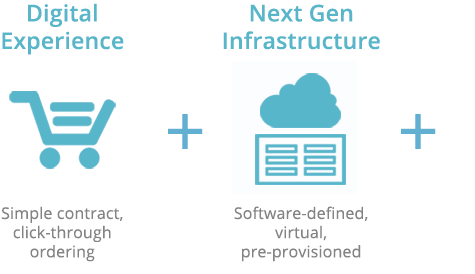AT&T’s Network Function Virtualization Infrastructure (NFVI) Cloud
AT&T’s Network Function Virtualization Infrastructure (NFVI) Cloud represents the new infrastructure used to support NFV.
This is where cloud operations, applications, and architectures are leveraged to support networking workloads. The network function software represents either a one-for-one mapping of an existing appliance function or alternately some combination of network functions designed for cloud computing.
IDC believes that NFV and SDN solutions are likely to emerge as the primary means of connecting the enterprise to a variety of public and private cloud services (IaaS, PaaS or SaaS). New NFV-based services, such as vFirewall, vWAN-optimization and vCPE may also be offered as real-time and as on-demand services.
AT&T is emerging as a leader in this regard with its new Network On Demand Ethernet service and the NetBond cloud connect service offering that extends an enterprise’s MPLS VPN connections to leading cloud service providers. Wide Area Networks (WANs) will continue to embrace greater LAN-like functionality as data environments become distributed over geographical distances. Security and SLA requirements for end-to-end application performance for the cloud-based services and connection services to third-party cloud providers are as important as the WAN.
This transition to an NFV-enabled virtualized service environment will provide a wide range of benefits to enterprises that include:
- Reducing the recurring cost of paying for separate managed CPE appliances for each service type
- Linear scale/pricing to accommodate usage-based models
- Flexibility to turn up/turn down new services at a branch office
- Self-provisioning of service, bandwidth, either on demand based on time of day or by workload
- Visibility via a web portal to see application-level performance
- Extending managed communication service offering to home/small/remote office
- Simplifying the incorporation of Internet technology into a WAN fabric while making it easier to ensure compliance with privacy and security regulations
- Explicit SLAs (e.g., for VoIP transport, high-bandwidth video conferencing), and the dynamic performance of the network and applications can be monitored so that particular virtual paths can be managed to meet the SLA while enabling the remaining link capacity to be used for other traffic, thereby improving link utilization significantly.

